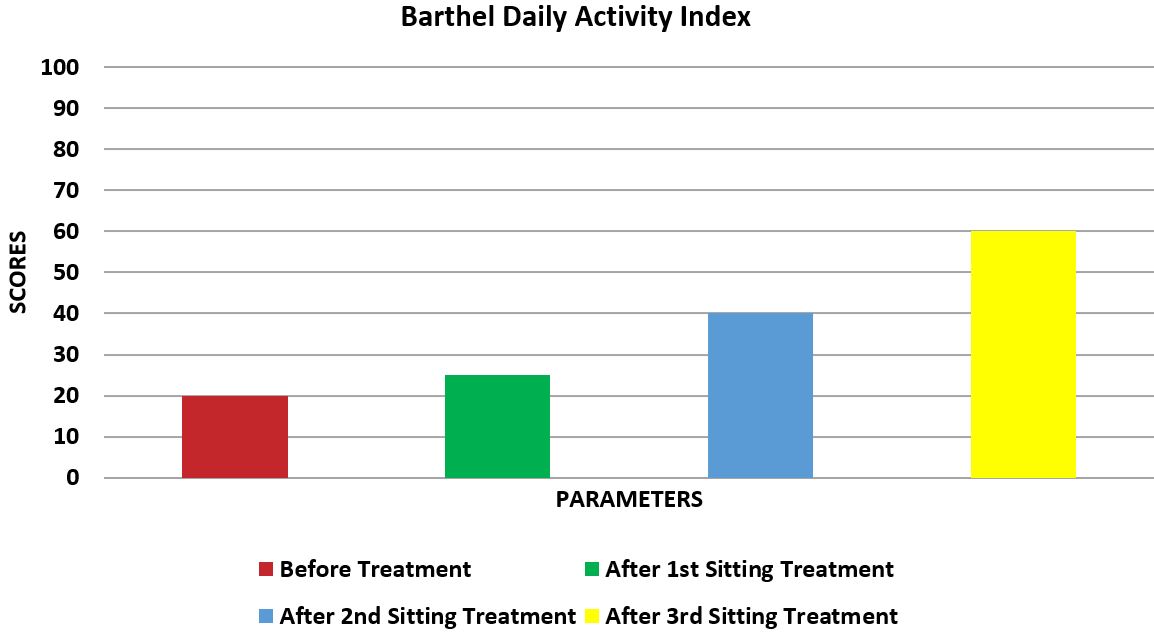Exploring Integrative Ayurveda in the Supportive Management of a Child with Angelman Syndrome - A Case Study
DOI:
https://doi.org/10.21760/jaims.10.5.44Keywords:
Angelman syndrome, Beejabhaga Dushti, Beejabhagavayava Dushti, Panchakarma therapies, Vata Nanatmaja VikaraAbstract
Angelman Syndrome (AS) is a rare neurogenetic disorder caused by the pathological lack of expression of the UBE3A gene on the maternal chromosome, combined with the physiological genomic imprinting or silencing of the paternal chromosome in neurons. It clinically presents with Intellectual disability, hypotonia, inappropriate laughter, poor speech etc,. The estimated prevalence is 1 in 16,000 live births. Though it presents significant challenges to affected children and their families, early intervention and proper care can improve the quality of life. A case of 5 year old female child with k/c/o Angelman Syndrome visited OPD, Department of Kaumarabhritya, Shri Dharmasthala Manjunatheshwara Institute of Ayurveda and Hospital, Bengaluru. She was presented with slurred speech with minimal words (Vak Vikara), lack of social communication, hyperactivity and inattentiveness (Chanchala Chitta), reduced concentration (Anavasthita Chittatva), unsteady gait and hypotonia, sleep disturbance. Due to involvement of Genetic susceptibility status and Predominant Vata Dosha symptoms, the condition is diagnosed as Beejadushtigata Vata Nanatmaja Vikara and appropriate Shamanaoushadi and Panchakarma therapies. Significant improvements were seen after the treatment.
Downloads
References
Barkoudah E, Kliegman RM, St Geme JW, Blum NJ, Tasker RC, Wilson KM, et al. Nelson Textbook of Pediatrics. 22nd ed. Canada: Elsevier; 2024.
Laxmidhar D, editor. Charaka Samhitha of Agnivesha. Sutrasthana, Ch. 20. 1st ed. Varanasi: Chaukamba Krishnadas Academy; 2012.
Busner J, Targum SD. The Clinical Global Impressions Scale. Psychiatry (Edgmont). 2007 Jul;4(7):28–37.
Bhala RR. Ayurveda approaches for Bala Roga with special reference to importance of classical formulations. Himalayan J Health Sci [Internet]. 2022 Jun 15 [cited 2022 Jun 15];7(2):19–21.
Dole VA. Rasaratnasamuccaya. 3rd ed. Ch. 5, Verses 9–11. Varanasi: Chowkhamba Sanskrit Series Office; 2015. p. 166–7.
Pandit KS, editor. Rasatarangini of Pranacharya S. 8th ed. Ch. 15, Verse 69. Delhi: Motilal Banarsidass; 2014. p. 375.
Nishteswar K, Vidyanath R. Sahasrayogam. Reprint ed. Taila Prakarana, 40. Varanasi: Chowkhamba Sanskrit Series Office; 2017. p. 135.
Nishteswar K, Vidyanath R. Sahasrayogam. Reprint ed. Taila Prakarana, 13. Varanasi: Chowkhamba Sanskrit Series Office; 2017. p. 117.
Venkatesh P, Ashivini. Effect of Dashmoola Siddha Ksheera Paka Kati Basti in Katishoola – A single case study. J Ayu Int Med Sci. 2022;7(4):127–32.
Murthy KRS, editor. Vagbhata’s Astanga Hrdayam. Vol 3, Uttarasthana, Ch. 1, Verse 45. Varanasi: Chaukamba Krishnadas Academy; 2018.
Mishra SN, editor. Bhaisajya Ratnavali of Kaviraj Govind Das Sen. Vajikarana Adhikara. Varanasi: Chaukhamba Surbharati Prakashan; [no year provided]. p. 117.















